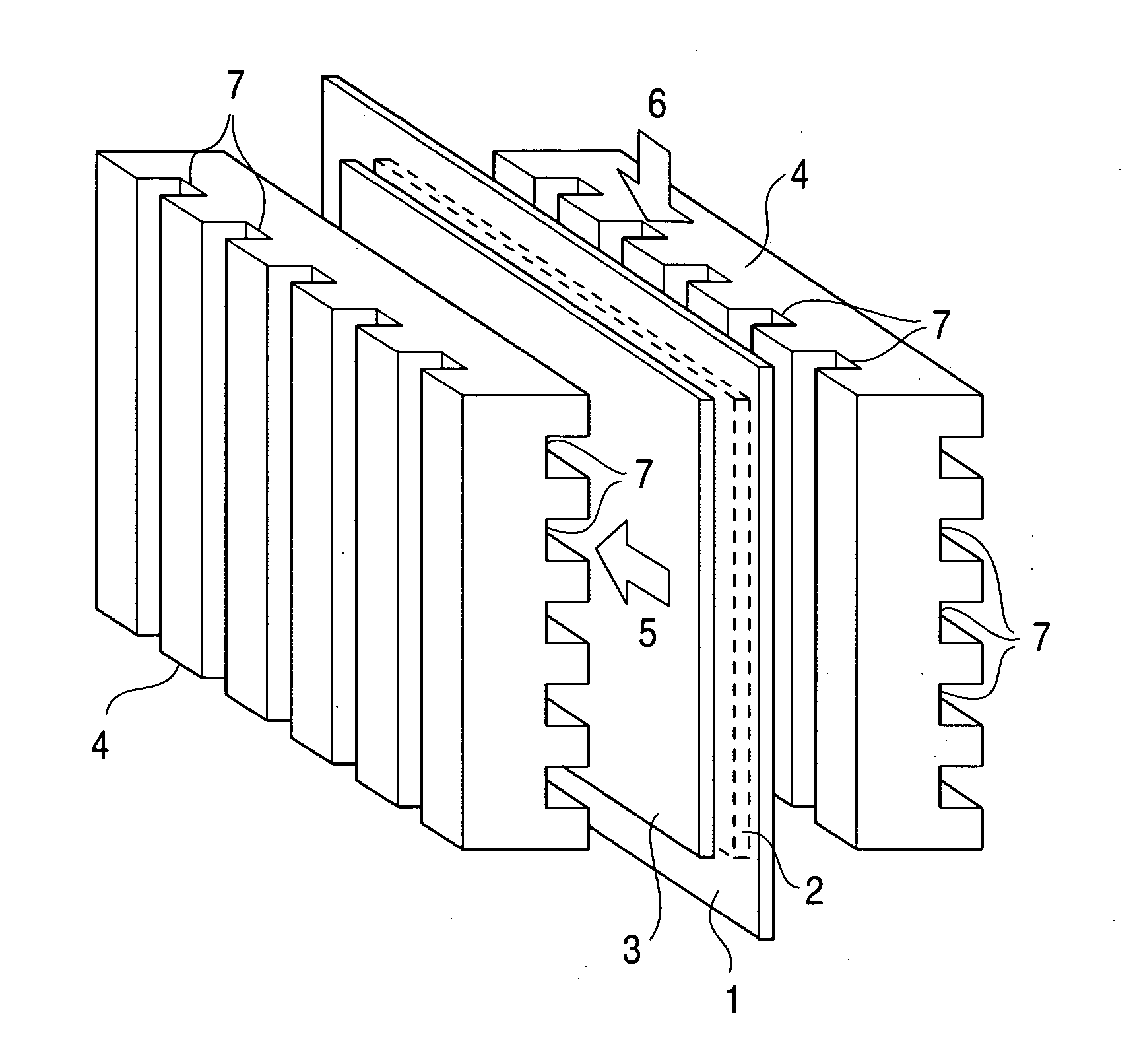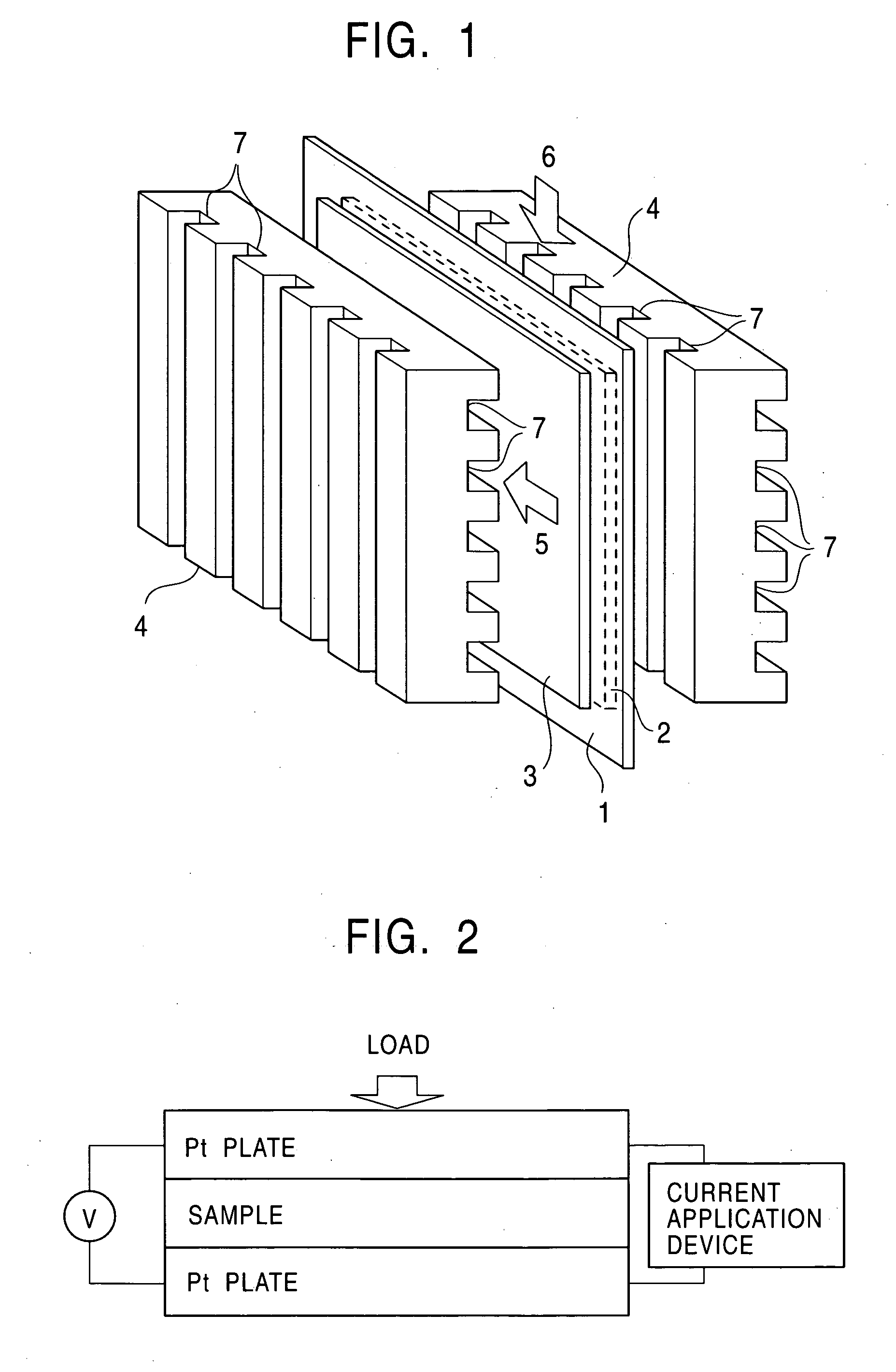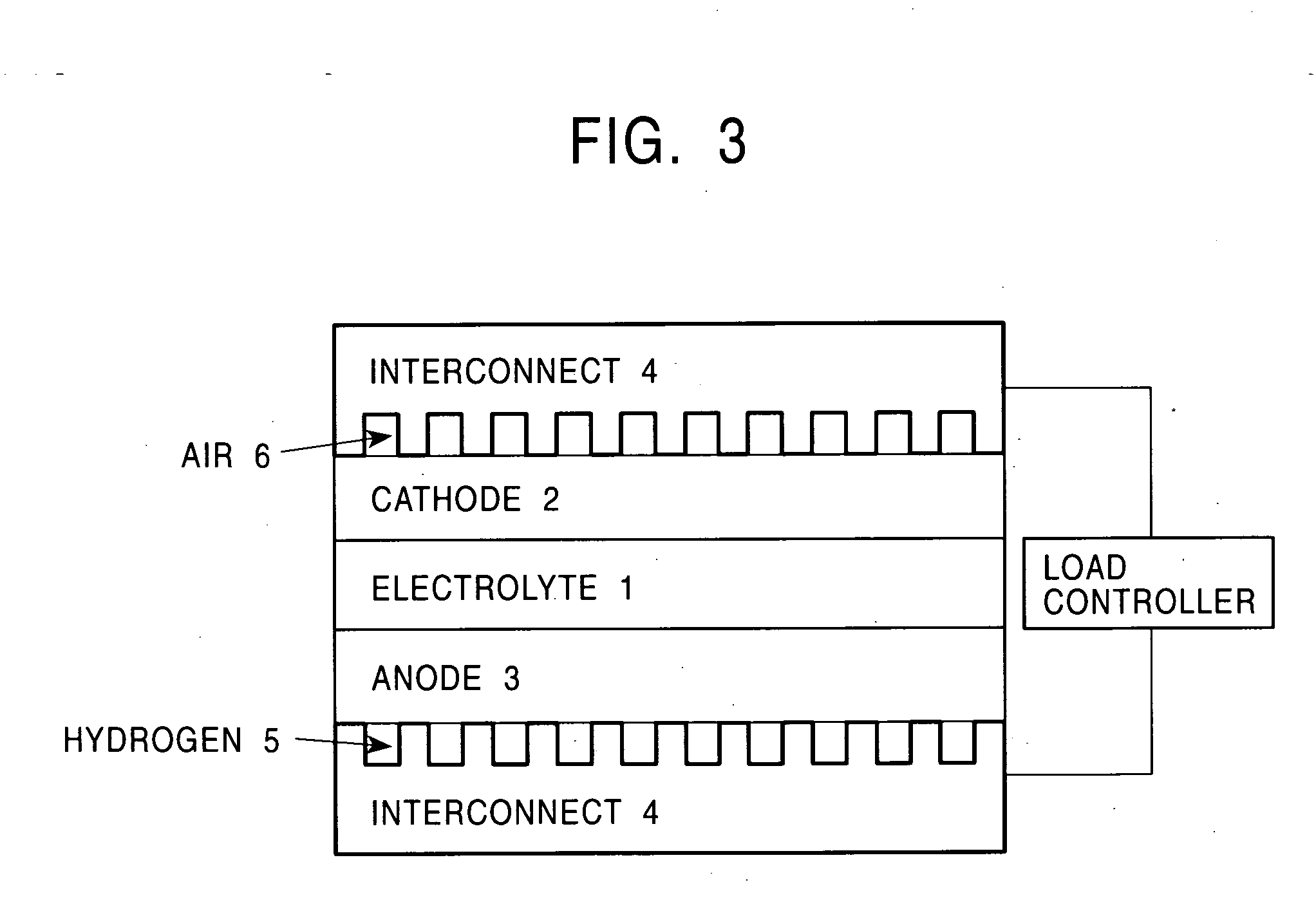Metal material for fuel cell, fuel cell using the same and method for producing the material
a fuel cell and metal material technology, applied in the field of metal material for solidoxide fuel cells, can solve the problems of insufficient oxidation resistance of fe—cr alloy materials to which only rem is added, and the need to improve the oxidation resistance of materials, so as to improve the oxidation resistance, and improve the effect of oxidation resistan
- Summary
- Abstract
- Description
- Claims
- Application Information
AI Technical Summary
Benefits of technology
Problems solved by technology
Method used
Image
Examples
example 1
Each of various metallic materials having the respective compositions shown in Table 1 was prepared in a converter and by secondary refining, and then formed into a slab of 200 mm in thickness by continuous casting. The slab was heated to 1250° C. and then hot-rolled to form a hot-rolled sheet of 5 mm in thickness. The hot-rolled sheet was annealed at 700° C. to 1200° C. and pickled. Next, the sheet was cold-rolled to form a cold-rolled sheet of 1 mm in thickness, annealed at 700° C. to 1200° C. and then pickled. A sample of 1 mm×30 mm×30 mm was cut out from the cold-rolled sheet and used for the test below.
<Oxidation Resistance Test>
A test piece was subjected to an oxidation test in which the test piece was maintained under heating in an air atmosphere in a furnace heated to 800° C. for 1000 hours, and the oxide formed on the surface of the steel sheet was identified by X-ray diffraction. Also, the difference between the weights before and after the test was divided by the ...
example 2
The characteristics of a hot-rolled sheet were examined. A 5-mm hot-rolled sheet of the material of No. 2 shown in Table 1 of Example 1 was annealed at 1050° C. and descaled by immersion in a mixed acid (15 percent by mass of nitric acid +5 percent by mass of fluoric acid) at 60° C. to obtain a hot-rolled annealed sheet. The obtained hot-rolled annealed sheet was subjected to an oxidation resistance test, an oxidation resistance accelerated test, and measurement of a thermal expansion coefficient and electrical resistance by the same methods as in Example 1.
As a result of the oxidation resistance test, the oxidation resistance accelerated test, and the measurement of total amounts of [precipitated Fe]+[precipitated Cr]+[precipitated Si] before and after the oxidation resistance test, the thermal expansion coefficient and electrical resistance, the hot-rolled annealed sheet formed by using the material of No. 2 shown in Table 1 showed 1.6 g / m2 in the oxidation resistance test, 60....
example 3
The cold-rolled annealed sheet formed by using the material No. 5 shown in Table 1 of Example 1 and the hot-rolled sheet formed in Example 2 were subjected to a precipitation treatment at 800° C. for 10 hours, and then examined with respect to the characteristics. The cold-rolled annealed sheet and the hot-rolled annealed sheet after the precipitation treatment were subjected to an oxidation resistance test, an oxidation resistance accelerated test, and measurement of a thermal expansion coefficient measurement and electrical resistance by the same methods as in Example 1.
As a result of the oxidation resistance test, the oxidation resistance accelerated test, and the measurement of total amounts of [precipitated Fe]+[precipitated Cr]+[precipitated Si] before and after the oxidation resistance test, the thermal expansion coefficient and electrical resistance, the cold-rolled annealed sheet formed by using the material of No. 5 shown in Table 1 showed 1.7 g / m2 in the oxidation resi...
PUM
| Property | Measurement | Unit |
|---|---|---|
| operating temperature | aaaaa | aaaaa |
| temperature | aaaaa | aaaaa |
| temperature | aaaaa | aaaaa |
Abstract
Description
Claims
Application Information
 Login to View More
Login to View More - R&D
- Intellectual Property
- Life Sciences
- Materials
- Tech Scout
- Unparalleled Data Quality
- Higher Quality Content
- 60% Fewer Hallucinations
Browse by: Latest US Patents, China's latest patents, Technical Efficacy Thesaurus, Application Domain, Technology Topic, Popular Technical Reports.
© 2025 PatSnap. All rights reserved.Legal|Privacy policy|Modern Slavery Act Transparency Statement|Sitemap|About US| Contact US: help@patsnap.com



